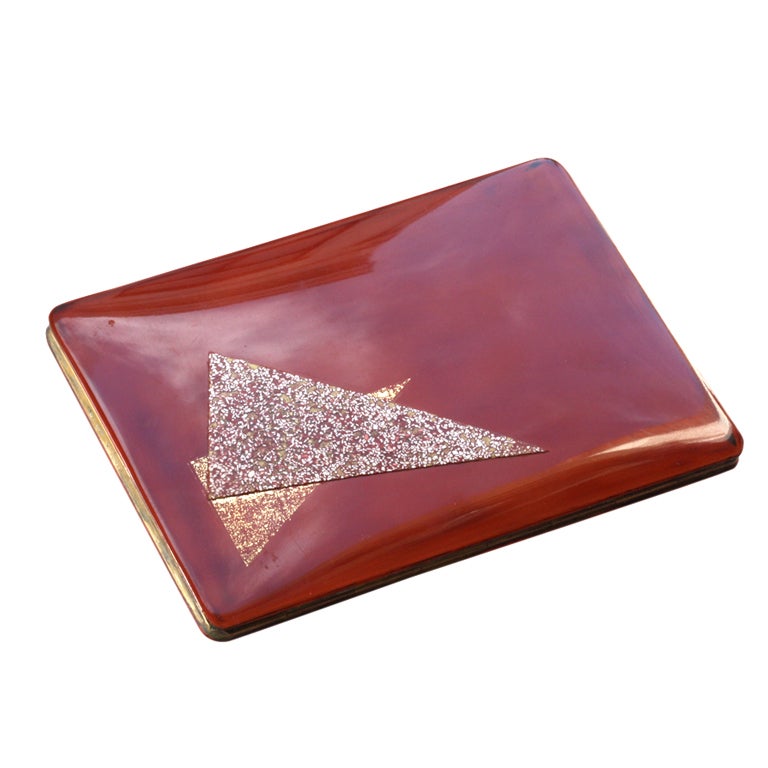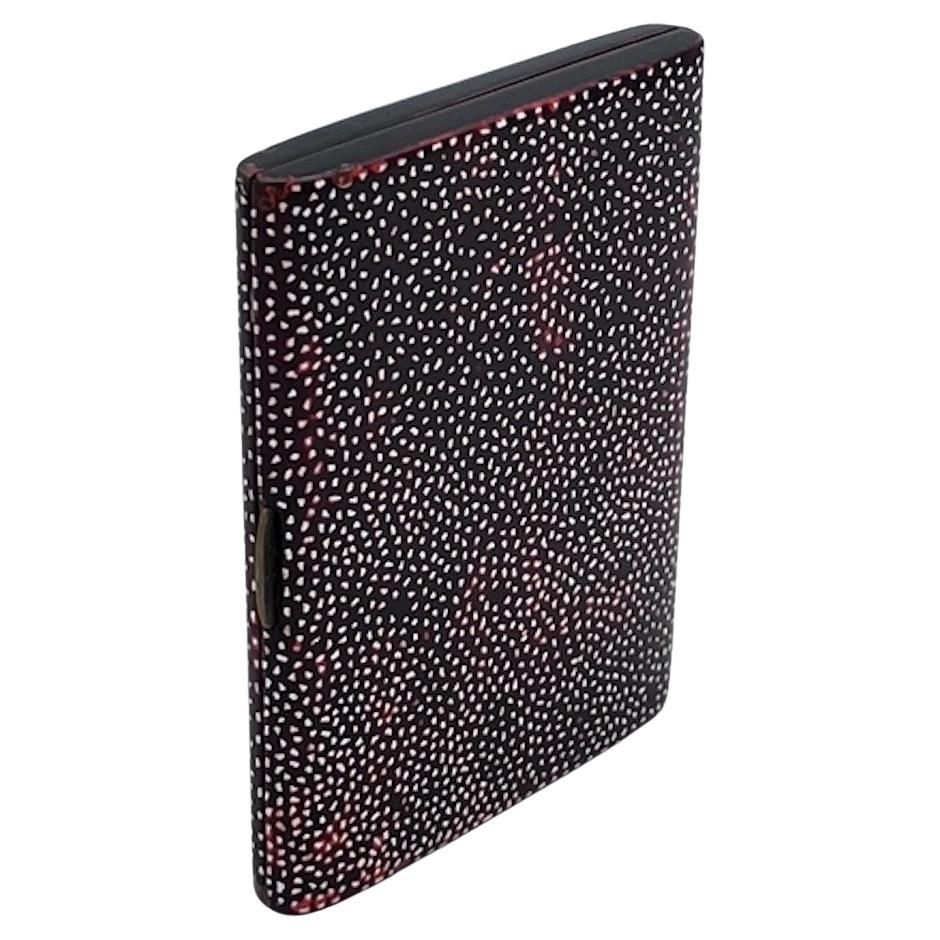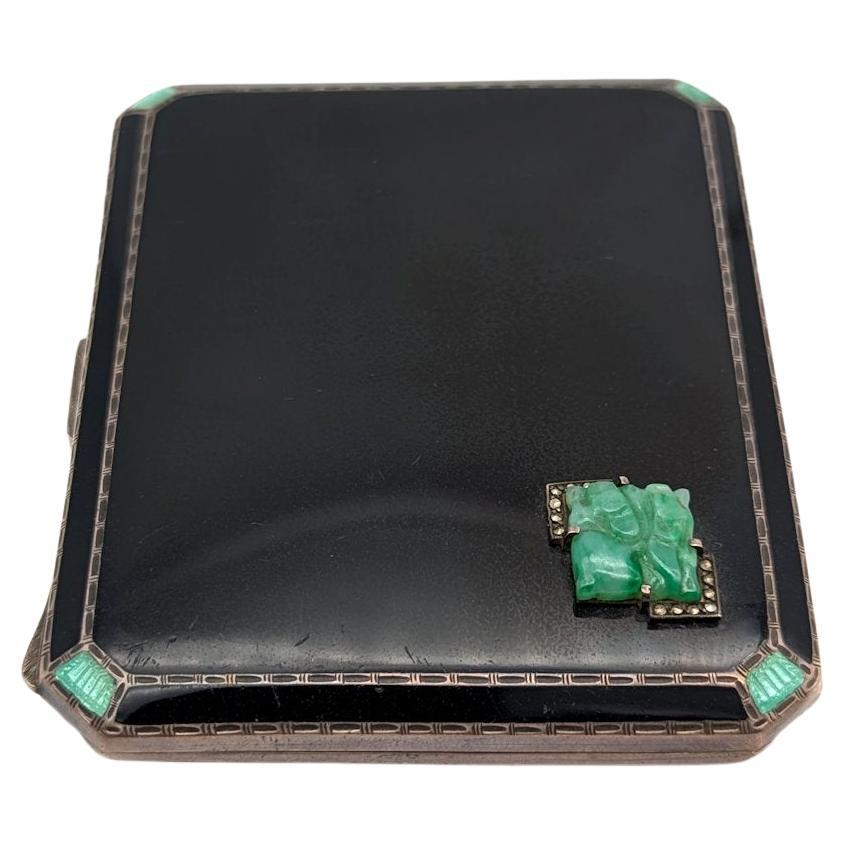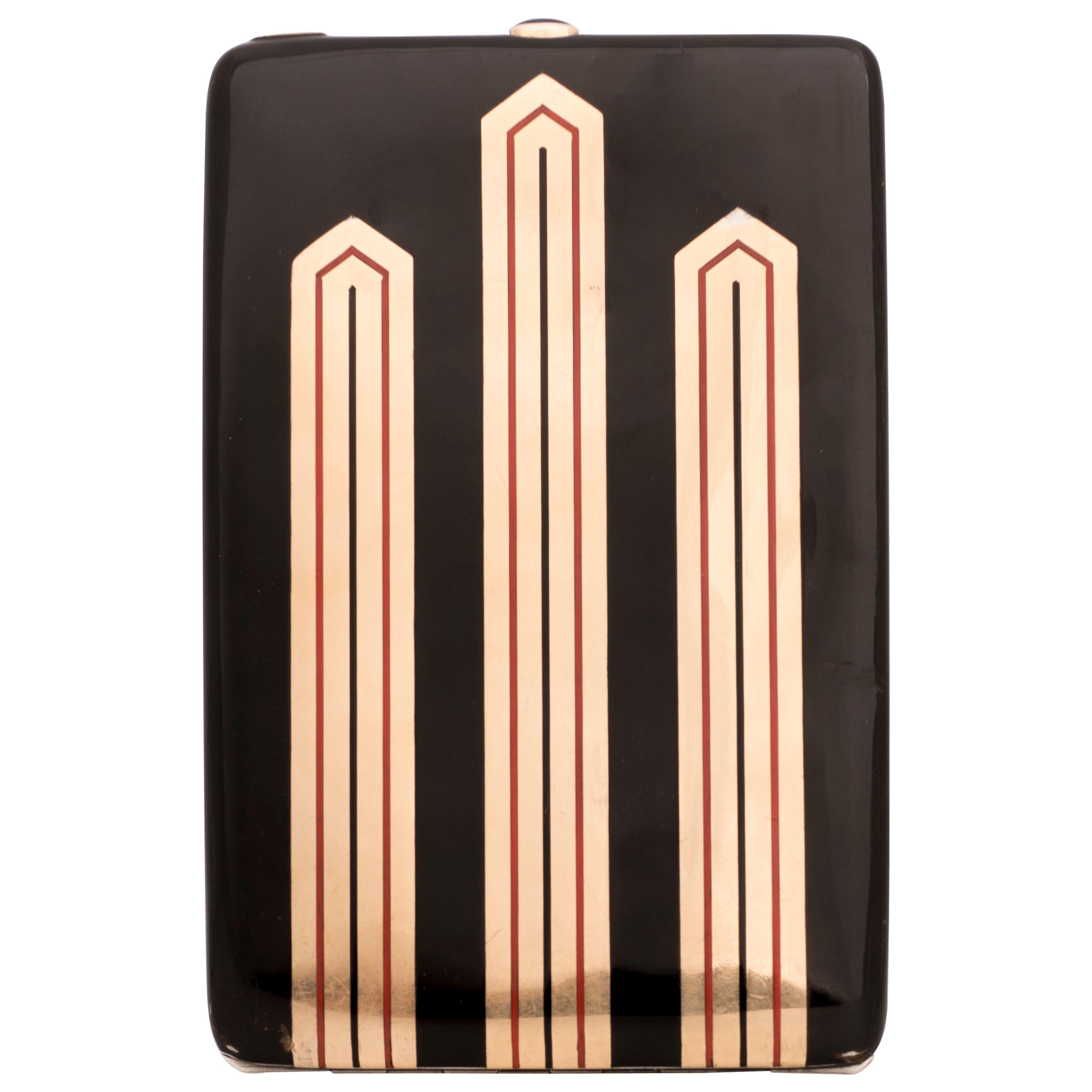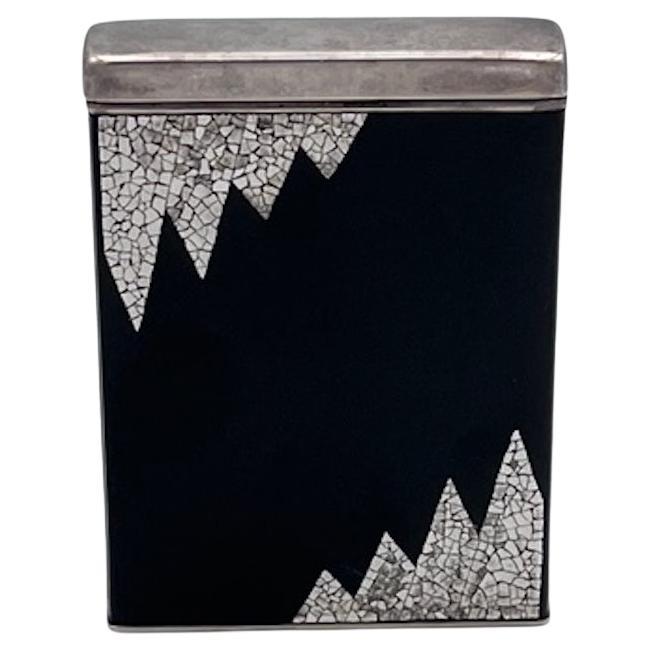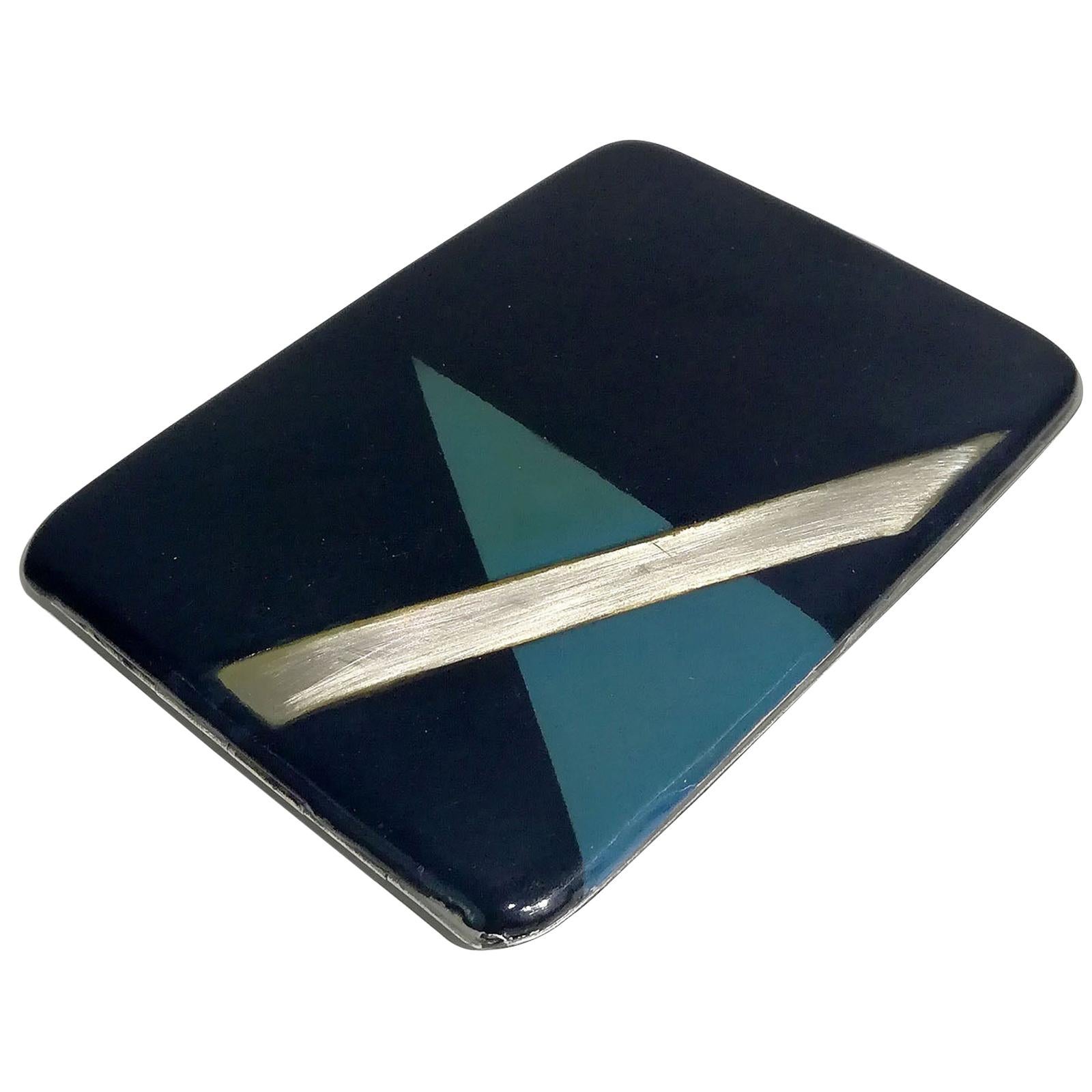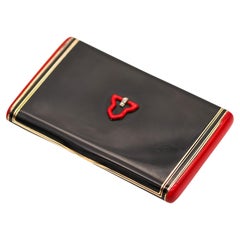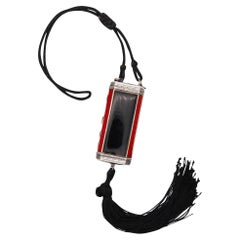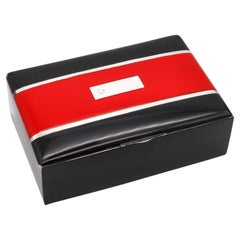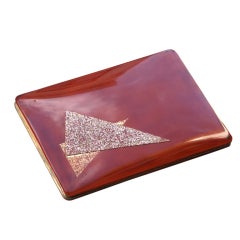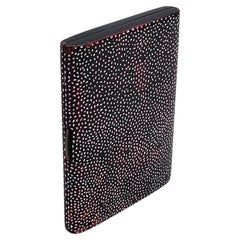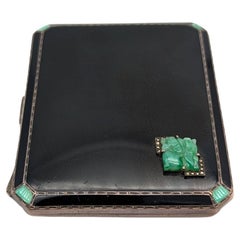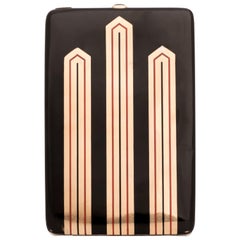Items Similar to Paul Emile Brandt 1928 Paris Art Deco Enameled Cigarette Box with Eggshell
Want more images or videos?
Request additional images or videos from the seller
1 of 9
Paul Emile Brandt 1928 Paris Art Deco Enameled Cigarette Box with Eggshell
$6,388
$7,98520% Off
£4,850.56
£6,063.2020% Off
€5,546.98
€6,933.7220% Off
CA$8,924.96
CA$11,156.2020% Off
A$9,926.51
A$12,408.1320% Off
CHF 5,183.31
CHF 6,479.1420% Off
MX$120,795.02
MX$150,993.7820% Off
NOK 66,198.82
NOK 82,748.5220% Off
SEK 62,082.81
SEK 77,603.5220% Off
DKK 41,399.22
DKK 51,749.0220% Off
Shipping
Retrieving quote...The 1stDibs Promise:
Authenticity Guarantee,
Money-Back Guarantee,
24-Hour Cancellation
About the Item
Enamelled cigarette box designed by Paul Emile Brandt (1883-1952).
Extraordinary cigarette case, created in Paris France during the Art Deco period, back in the 1928. Crafted in solid silver nickel and the enamel has been made at the atelier of Paul Emile Brandt. Fitted with integrated hinges and a push lock. The decoration is geometric made up with red, black and eggshell enamel.
Weight: 185.2 Grams, (118.72 Dwt).
Measurements: 133.4 mm by 88.90 mm by 11 mm (5.25 x 3.50 x 0.43 Inches).
Hallmarks Unsigned as usual but stamped with the maker's mark, the mark for the assay of the metal, the model numbers and signed, "ARGENTAN 739".
Paul Emile Brandt
Brandt was born in Chaux-Fonds, Switzerland in 1883 and moved to Paris at a young age. He studied with Chaplain and Allard where he received a comprehensive foundation in several disciplines including jewellery design, painting, sculpture, engraving, and enamelling. After a few years he decided to go into business on his own and in keeping with the current artistic trends in Paris at that time, he created jewellery in the Art Nouveau style. In 1906 he exhibited at the annual Expositions of ‘La Societe des Artistes Francais’ after which the Musée des Arts Décoratifs acquired several of his pieces for their permanent collection. He didn’t officially register his makers mark until October 22, 1912 at which point his premises is listed as 23 rue Victor-Chevreuil.
Along with the multiple skills he had acquired during his training Brandt began to experiment with different techniques such as engraving on gemstones. Amongst those he chose to set in jewellery was the beautifully carved oval moonstone depicting a reclining female figure and angel which he set within a three dimensional diamond and calibré-cut sapphire pleated surround. His showcase at the Salon des Artistes Français in 1923 invited guests to view “jewels, jewellery and engraved stones, precious stones, platinum and gold”. He participated in the International Exhibition of 1925 where he presented a collection of Art Deco style jewels he described as “jewellery of great design and great construction” which combined brilliant cut diamonds, platinum and gold with hardstones such as malachite and lapis lazuli. Towards the end of the 1920s he began to move towards a more modernist style and the beautiful gem-set jewels were joined by heavily geometric pieces in silver which were decorated with Stark coloured enamels and a widespread use of eggshell lacquer. Circles and triangles were dominant motifs arranged in abstract compositions and these were used on accessories such as cigarette cases as well as jewellery.
Brandt accorded huge importance to the display of his jewellery and in 1927 he employed architect Eric Bagge to design and construct the window for his Salon, the style of which echoed the geometric forms of his jewellery. Like Jean Després and Raymond Templier, Brandt began experimenting with the effect of light and juxtaposing plaques of lapis lazuli or lacquer with transparent materials like rock crystal or diamonds. He also used delicate round pearls as a contrast to the regular lapis forms. During the early 1930s he created rings, pendants and bracelets that combined geometric figures with sections of work in relief. His final exhibition came in 1936 as subsequently he turned his attentions towards more Industrial pursuits. He opened a tin factory in rue de Tlemcen which employed fifteen to twenty workers and which helped with the War effort between 1939 and 1945. Brandt died in Paris in 1952 and his factory closed the following year. Best remembered for his bold and innovative Art Nouveau and Art Deco designs, Paul-Emile Brandt was a leading figure of the Art Moderne movement along with contemporaries such as Després and Templier. (From Hancocks with thanks).
Literature: Sylvie Raulet, Art Deco Jewelry, 1985 Rizzoli, Pp 63 for similar examples illustrated, see figure.
Collateral: It is accompanied by a presentation jewelry pouch.
Condition: The overall condition of this ring is excellent. Beside the little normal wear, there is no damage to the gold. All gemstones, are secured in the settings. This piece has been carefully inspected to guarantee the condition and the authenticity.
INVENTORY REF: D051923XONM/5.342.
- Creator:Brandt (Designer)
- Dimensions:Height: 0.43 in (1.1 cm)Width: 5.25 in (13.34 cm)Depth: 3.5 in (8.89 cm)
- Style:Art Deco (Of the Period)
- Materials and Techniques:
- Place of Origin:
- Period:
- Date of Manufacture:1928
- Condition:Wear consistent with age and use. The overall condition of this ring is excellent. Beside the little normal wear, there is no damage to the gold. All gemstones, are secured in the settings. This piece has been carefully inspected to guarantee the condition and the authenticity.
- Seller Location:Miami, FL
- Reference Number:Seller: D051923XONM/5.3421stDibs: LU8303234378312
About the Seller
5.0
Gold Seller
Premium sellers maintaining a 4.3+ rating and 24-hour response times
1stDibs seller since 2023
206 sales on 1stDibs
Typical response time: 3 hours
- ShippingRetrieving quote...Shipping from: Miami, FL
- Return Policy
Authenticity Guarantee
In the unlikely event there’s an issue with an item’s authenticity, contact us within 1 year for a full refund. DetailsMoney-Back Guarantee
If your item is not as described, is damaged in transit, or does not arrive, contact us within 7 days for a full refund. Details24-Hour Cancellation
You have a 24-hour grace period in which to reconsider your purchase, with no questions asked.Vetted Professional Sellers
Our world-class sellers must adhere to strict standards for service and quality, maintaining the integrity of our listings.Price-Match Guarantee
If you find that a seller listed the same item for a lower price elsewhere, we’ll match it.Trusted Global Delivery
Our best-in-class carrier network provides specialized shipping options worldwide, including custom delivery.More From This Seller
View AllStrauss Allard et Meyer Paris 1926 Lacquered Art Deco Cards Case In 925 Sterling
By Strauss Allard et Meyer
Located in Miami, FL
Cards box designed by Strauss-Allard & Meyer.
Exceptional art deco rectangular case, created in Paris France at the jewelry workshop atelier of Strauss Allard et Meyer, back in the 1925-1926. This piece has been carefully crafted in solid .925/.999 sterling silver with gilt interiors. It is decorated with applications on both sides of vivid red-orange lacquer. This beautiful box was made with cushioned edges and is fitted with an six barrel tension hinge, a push lock and a barrier to storage cards. It is in mint condition with no trace of use or wear and can be easily used as a luxury presentation cards-box.
Weight: 65.30 Grams, (41.86 Dwt).
Measurements: 55 mm by 68 mm by 9.5 mm (2.16 x 2.68 by 0.39 Inches).
Hallmarks: Stamped with French marks; the Parisian maker's mark SAM associated to Strauss Allard & Meyer, the French national mark for the assay of the .925 silver and the serial numbers 12731.
Strauss Allard Meyer Maker’s Mark
Strauss-Allard et Meyer
Strauss, Allard et Meyer, in Place des Vosges, were one of the most successful of the Parisian Art Deco workshops, specializing in luxury vanity cases and boxes, many of which were in the 'chinoiserie style', The offices were located at 25 of the rue Taitbout. The workshop at the 19 of rue Louis-le-Grand & later in 11 place des Vosges, Paris France. Their specialty was Boxes, paper-cutters, lighters and Ojects de Vertu. In 1909 Jean Gustave Maurice Allard & Emile Meyer...
Category
Vintage 1920s French Art Deco Decorative Boxes
Materials
Gold, Silver, Sterling Silver
$2,388 Sale Price
20% Off
Tonnel Paris 1928 Art Deco Box In 14Kt Gold With Red & Black Lacquer And Diamond
By Tonnel Paris
Located in Miami, FL
An art deco enameled box designed by Tonnel Paris.
Magnificent rectangular box, created in Paris France for Tonnel-Paris during the art deco period, back in the 1920's. This beautiful cased box has been crafted in yellow gold of 14 karats and embellished with applications of red and black thick glass enamel. It is fitted with a nine-barrels hinge and a push thumb lock. The lid is decorated on top with an extra art-deco motif made in platinum, which are set up with three European old round diamonds. The craftmanship and the contrast of colors are amazing. The interiors are highly polished showing rich yellow gold and actually, this gorgeous box can be used for presentation cards.
Diamonds: The platinum part is mount, with 3 European round diamonds, .06 carats, white colorless F color, VS-2 clarity.
Weight: 119.95 Grams, (76.89 Dwt).
Measurements: 56 mm by 89 mm by 12 mm (2.2 x 3.52 x 0.47 Inches).
Hallmarks: Stamped with French marks; three times with the maker's mark AC...
Category
Vintage 1920s French Art Deco Snuff Boxes and Tobacco Boxes
Materials
Multi-gemstone, Gold, Platinum, Enamel
$5,200 Sale Price
20% Off
Scholl Limited Glasgow Art Deco 1924 Enameled Minaudière In .925 Sterling Silver
By albert scholl
Located in Miami, FL
Art deco German enamel minaudière imported by Scholl Limited Co.
An exceptional art deco minaudière, imported into Glasgow England by the retailer and goldsmiths, Scholl Limited Com...
Category
Vintage 1920s English Art Deco Decorative Boxes
Materials
Silver, Sterling Silver, Enamel
$2,318 Sale Price
20% Off
Charles Thomae 1925 Art Deco Box with Red and Black Lacquer in Sterling Silver
By The Thomae Company
Located in Miami, FL
Art Deco lacquer box designed by Thomas.
An impressive, beautiful and colorful box, created in Attleboro Massachuchet by the Charles Thomae Company, ...
Category
Vintage 1920s American Art Deco Cigar Boxes and Humidors
Materials
Silver, Sterling Silver
$1,800 Sale Price
20% Off
Louis Kuppenheim 1928 for Dunhill Peacock Enameled Compact Box .935 Sterling
By Louis Kuppenheim, Alfred Dunhill
Located in Miami, FL
Enameled compact box by Louis Kuppenheim for Alfred Dunhill.
An extraordinary round compact box, created in the city of Pforzheim Germany during the art deco period, back in the late 1920's. This superb elegant round box is closely to mint condition, is very rare and was carefully crafted at the Louis Kuppenheim workshop in solid .935/.999 silver, with gilt interiors and a mirror. Exceptional workmanship as you expect of the workshop of Louis Kuppenheim, with remarkable enameled patterns of peacocks feathers on both faces. Embellished around with white enamel frames and the borders with incised and carved panels with flowers.
Engraved: Monogram GG for Gussie Gerstenzang.
Weight: 143.40 Grams, (91.92 Dwt).
Measurements: Diameter of 80 mm by 12.5 mm (3.14 x 0.49 Inches).
Hallmarks: Stamped with the maker's mark and signed, "MADE IN AUSTRIA 08233 STERLING SILVER .935 ASC 935". For Alfred Dunhill.
Louis Kuppenheim Company
The company was grounded in 1854 by Louis Kuppenheim (1824-1889) and Heinrich Witzenmann, specialized in silver and gold and enameled artefacts. On the World Exhibition in 1900 the firm received a gold medal for a letter opener. In that same year the company opened a branch in the Rue Richelieu 67 in Paris. In these years some designs by Hans Christiansen were executed, amongst them very delicately enameled silver cigarette cases. The enamels on the several silver and gold pieces was of very high standard, and sometimes even gems like rubies were applied. Very famous were the ladies silver vanity cases with cute animals like cats and monkeys...
Category
Vintage 1920s Austrian Art Deco Decorative Boxes
Materials
Silver, Sterling Silver, Enamel
$2,120 Sale Price
20% Off
ALFRED DUNHILL Paris 1928 Louis Kuppenheim Enameled Japonisme Box 935 Sterling
By Louis Kuppenheim, Alfred Dunhill
Located in Miami, FL
An enameled box by Louis Kuppenheim for Alfred Dunhill.
This is an extraordinary and extremely rare desk box with double enameling. The box have been created in the city of Pforzhei...
Category
Vintage 1920s French Art Deco Decorative Boxes
Materials
Gold, Silver, Enamel
You May Also Like
JEAN DUNAND Enamel and Metal Cigarette Box
Located in Amsterdam, NL
A large metal box decorated with two triangle decorations in red and eggshell enamel on a brown back ground, signed: Jean Dunand, circa 1925.
Category
Early 20th Century French Art Deco Boxes and Cases
Rare Jean Dunand Art Deco Cigarette Case, Circa 1930 – Bronze & Eggshell Lacquer
By Jean Dunand
Located in Red Lion, PA
Rare Jean Dunand Art Deco Cigarette Case, Circa 1930 – Bronze, Coquille d’Œuf, and Lacquer
This exceptional Art Deco Jean Dunand cigarette case,...
Category
Vintage 1930s French Art Deco Snuff Boxes and Tobacco Boxes
Materials
Bronze
An enameled art deco sterling silver cigarette case by Asprey & Co. Ltd. 1933
By Asprey International Limited
Located in Aachen, DE
A quality english sterling silver and enamel cigarette case from 1933 by Asprey & Co. Ltd., made in Birmingham and retailed in London. Designed in the art deco style with green and b...
Category
Vintage 1930s English Art Deco Decorative Boxes
Materials
Sterling Silver, Enamel
Gustave-Roger Sandoz, Rare Art Deco Silver and Enamel Cigarette Case, circa 1925
Located in Paris, FR
Express Shipping still available during Lockdown
Gustave-Roger Sandoz
Cigarette Case, Circa 1925
Silver with Enamel geometric decoration on both sides. The clasp set with a cabochon...
Category
Vintage 1920s French Art Deco Vanity Items
Materials
Onyx, Silver
$14,377
Free Shipping
Art Deco Dunhill Eggshell and Enamel Cigarette Case
By Dunhill
Located in Red Lion, PA
Rare Art Deco Dunhill Silver-Plated & Lacquered Cigarette Case with Coquille d’Œuf Inlay – Circa 1930
This stunning Art Deco Dunhill cigarette case is a masterpiece of elegant desig...
Category
Vintage 1920s British Art Deco Snuff Boxes and Tobacco Boxes
Materials
Silver, Enamel
French Art Deco black Lacquered Silver Cigarette Case, circa 1930
Located in Beirut, LB
Rectangular black lacquered silver cigarette case with geometric decoration on the side.
This is a very rare good looking and functional piece of collectible smoking equipment.
Category
Mid-20th Century French Art Deco Cigar Boxes and Humidors
Materials
Silver
More Ways To Browse
Paris Exposition 1925
Window Boxes
Enamel Art Plaque
Enamel Cigarette
Art Deco Black Enamel Box
Enamel Gem Ring
Art Deco Recliner
Antique Tobacco Signs
Antique Cigarette Cases
Gold Cigarette Box
Art Nouveau Numbers
La Rue Jewelry
Deco Cigarette Case
Lacquered Eggshell
Enamel Cigarette Case
Art Moderne Jewellery
Antique Silver Cigarette Case
Enamel Angel
